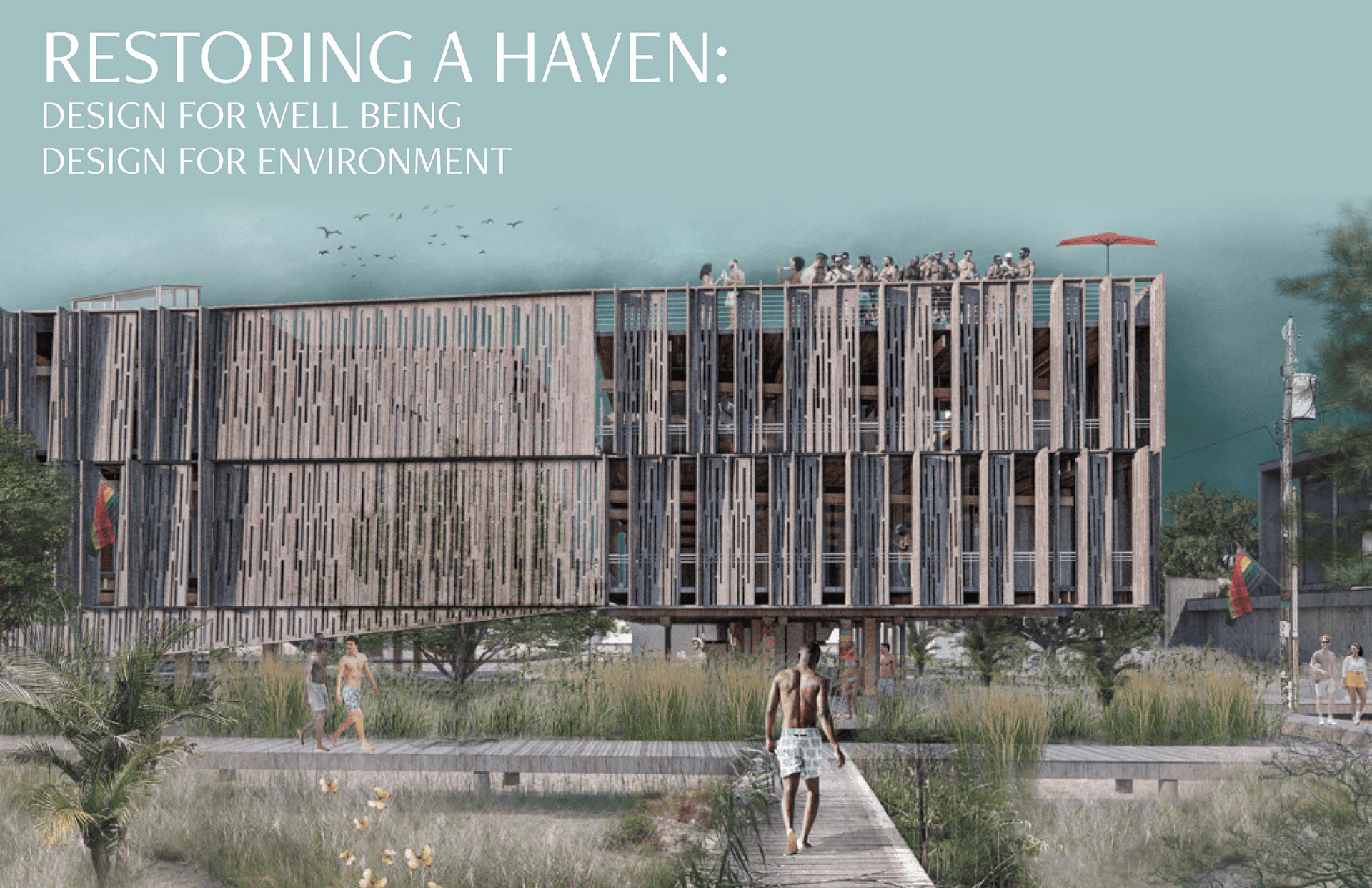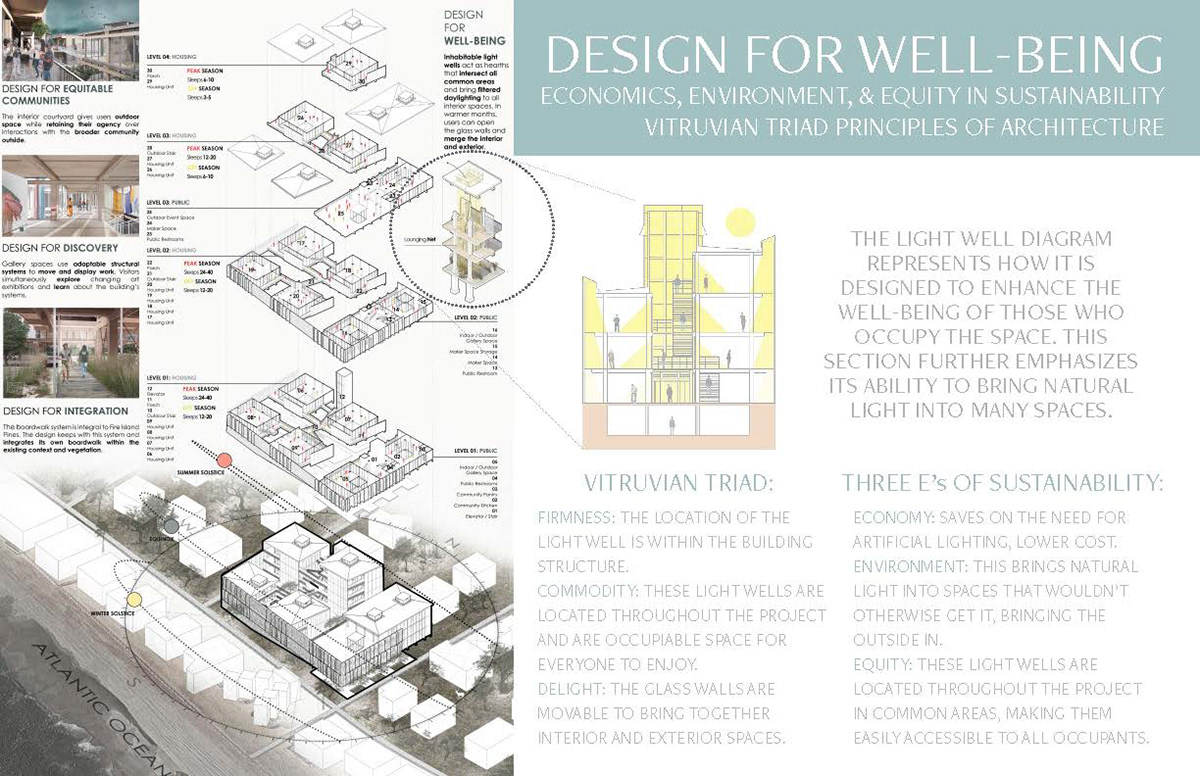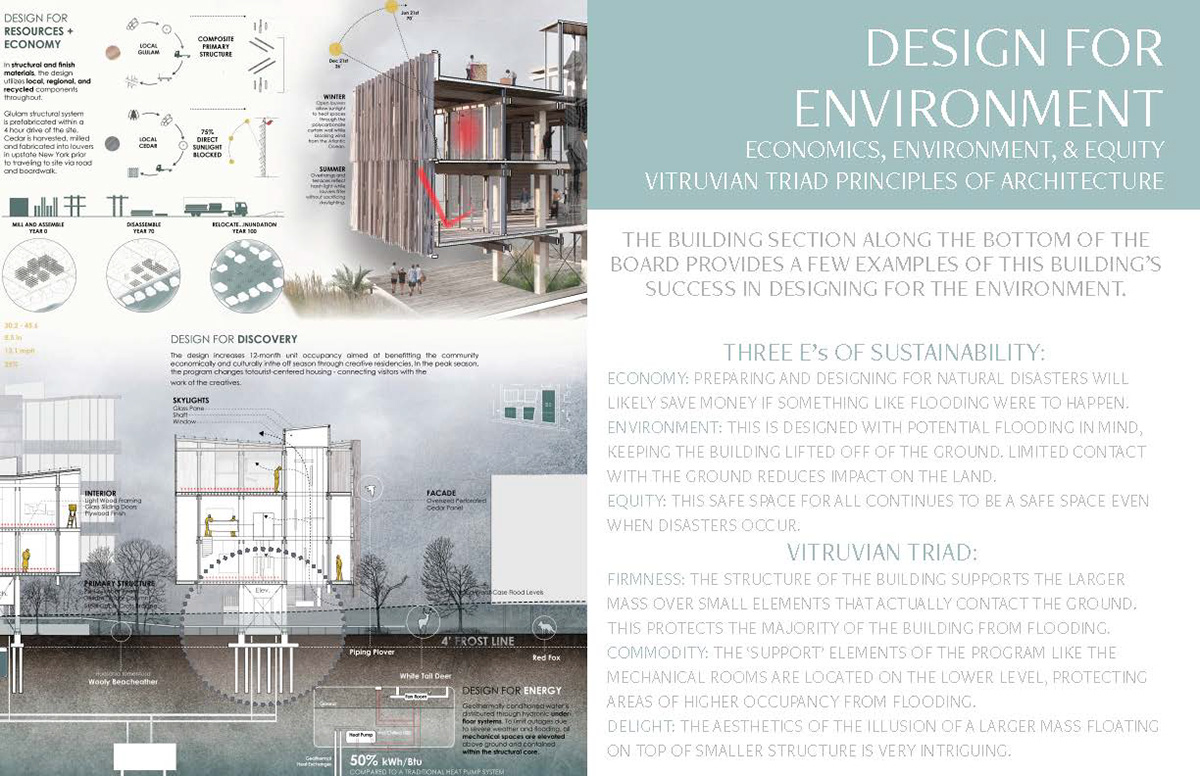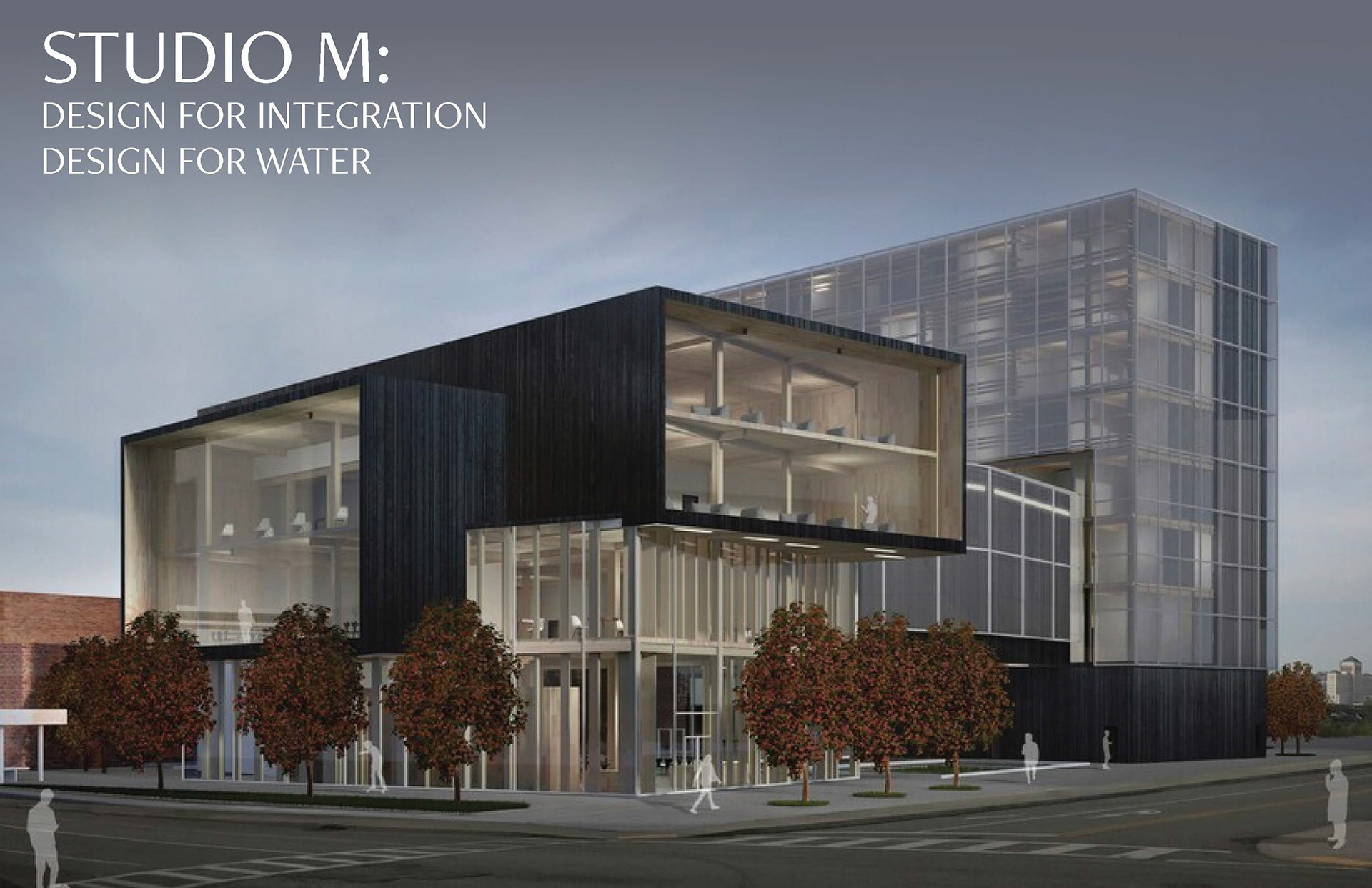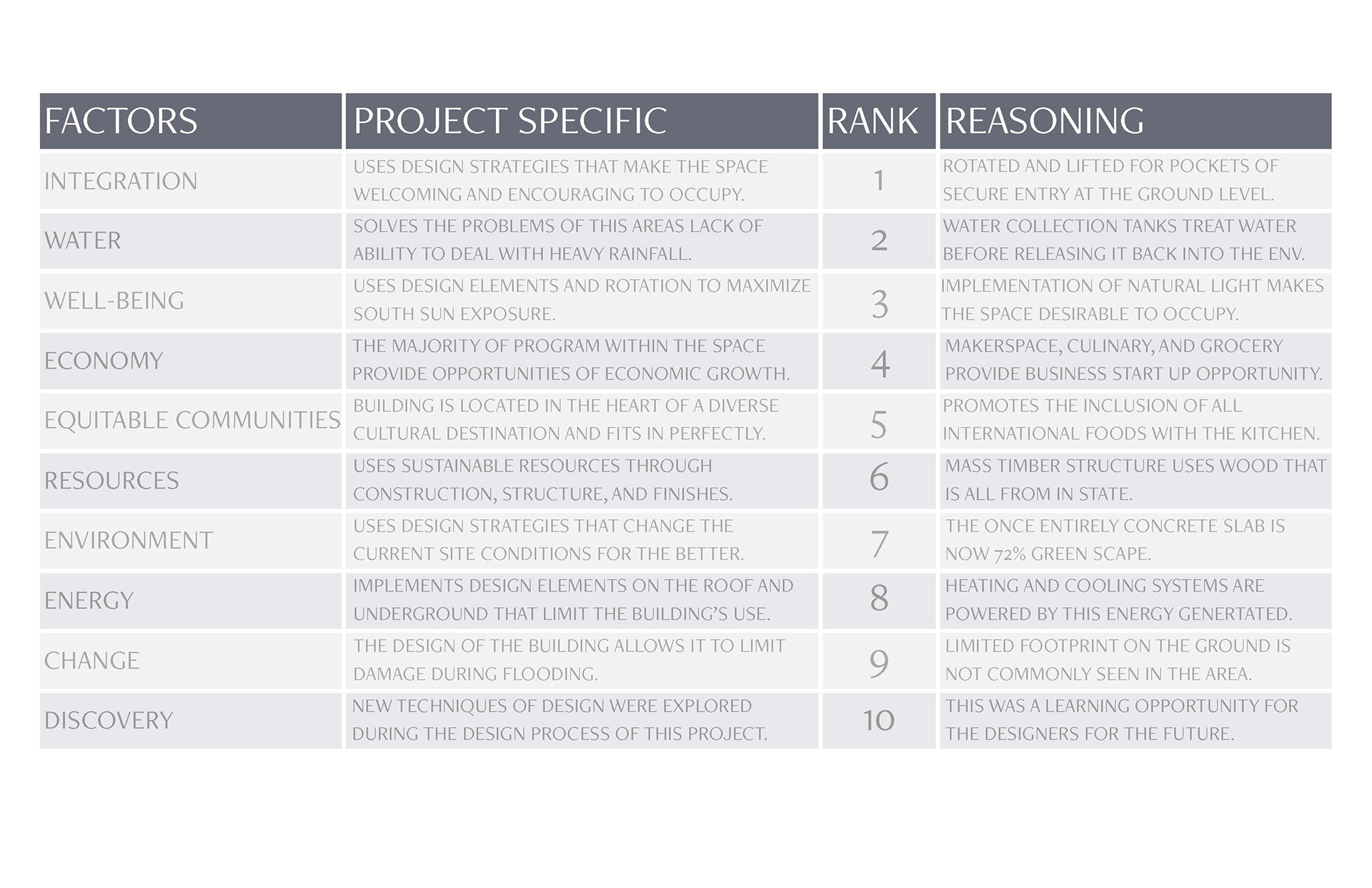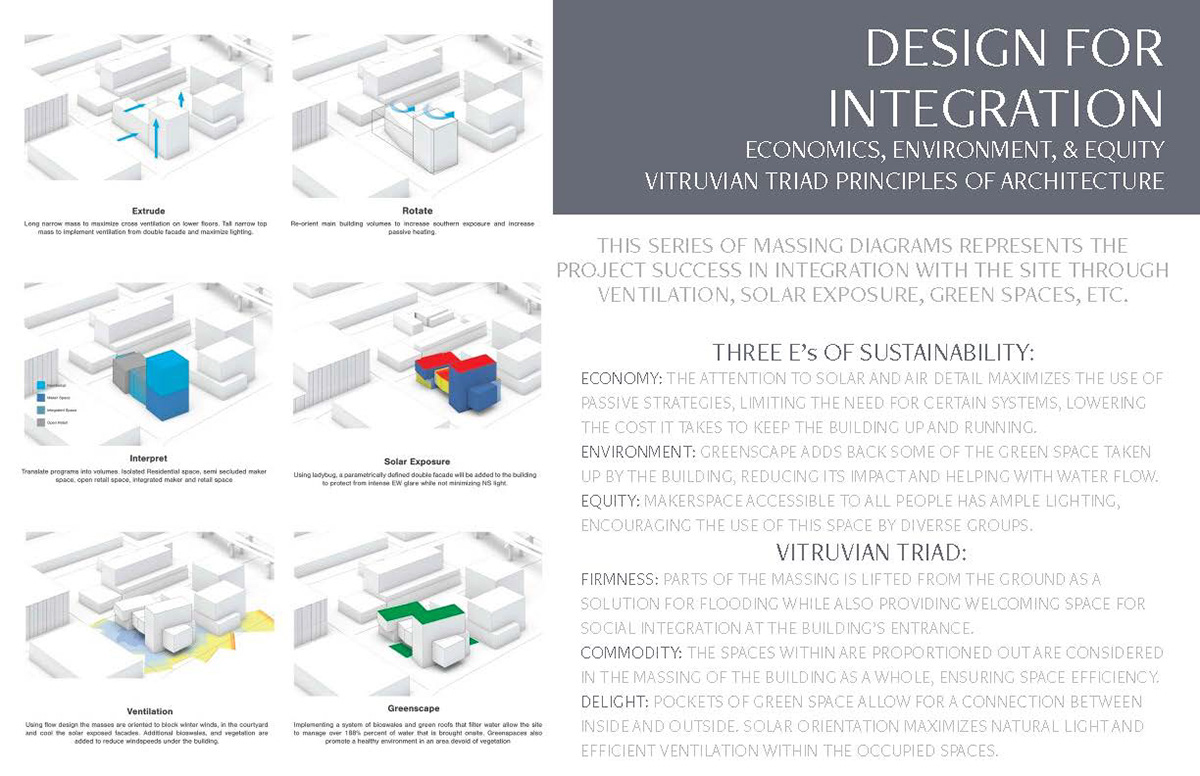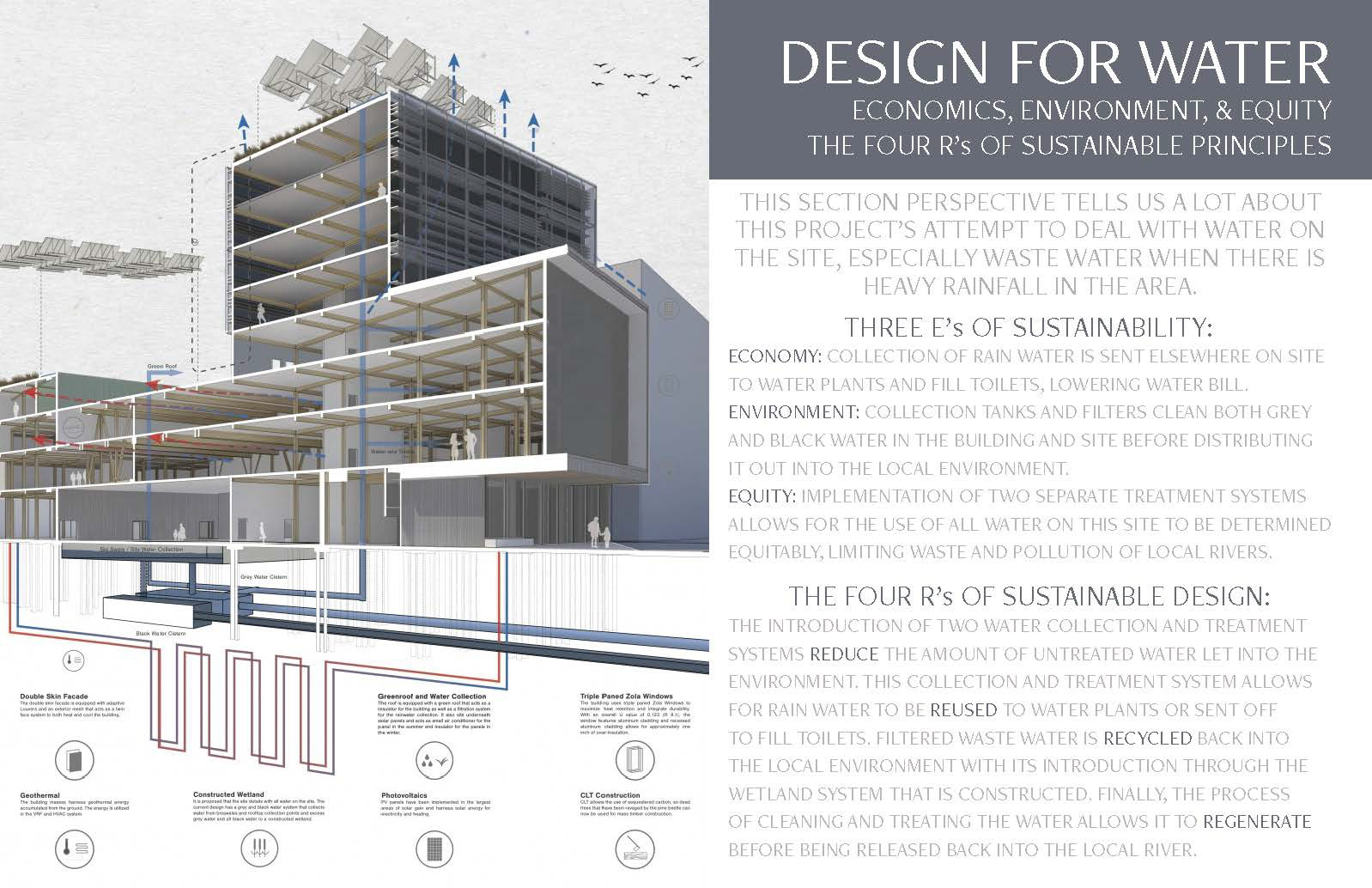"Architects’ responsibly to leverage ecological, advanced building performance, adaptation, and resilience principles in their work and advocacy activities," and a "shared value of the profession."
National Architectural Accrediting Board (NAAB)
Ecology and sustainability are essential in architecture because they impact both our environment and the natural world we inhabit. Understanding an architect's role in balancing the built and natural environments to address climate change is crucial for tackling many of today’s challenges. Architects significantly impact the environment through aspects like energy consumption, sustainability, carbon emissions, and overall carbon footprint. At Belmont’s architecture program, we’ve been emphasizing these principles through courses like Systems I and II, Studio III, and beyond. Looking ahead, I believe these topics will be increasingly important in my career, especially with the growing range of certifications such as the AIA COTE Top Ten awards, LEED Certifications, and the Living Building Challenge, among others that will likely emerge. Moving forward, I intend to delve deeper into this information and use it to guide my architectural practices and personal choices as the data evolves
During the fall semester of my fourth year, I was introduced to my first world studio project in Ahmedabad, India. The project was focused on the redevelopment of a current slum in the city's urban context to provide equitable and healthy living conditions to those who dwell in that area. With it being a low-income settlement, my group decided to take a focus on passive design strategies to provide better living and inhabiting conditions, with less cost.
DIDACTIC STATEMENT:
The project that my group entitled Community at Scale was completed in the fall of 2023 during studio V with professor Fernando Lima. With this being our largest project in terms of scale, we took a whole picture approach with urban planning using pattern language and shape grammar strategies. With only having a semester to tackle the whole site design, these strategies helped up reach a master plan pretty early in the design process, enabling us to focus of smaller details that respond to the site's conditions. Situated in a flood plain, we located a large community park in the main floodway with levee systems in place to help reduce the spread of flooding into living areas. Additionally, with limited access to clean drinking water, we implemented a cooling station tower that doubled as a water collector. These towers would pull water out of the air, and be stored for the members of the community to use as needed, this also doubled as a cooling station which is necessary with the extreme summer heat they experience in Ahmedabad.
At the beginning of my third year, in studio III, we were tasked with designing a memorial for the Trail of Tears on the Hermitage site. That was our largest project to date and was a huge undertaking as a young designer. Through research and learning about the Cherokee Nation and culture, I designed a memorial/museum that was reflective of their values and culture. I designed a structure that had a light touch on the earth and weaved through the existing trees on the trees, so that the sacred land was left as untouched as possible.
DIDACTIC STATEMENT:
This project called The Nashville Trail of Tears Memorial was completed in the fall of 2022 during Studio III with professor Anthony Monica. Though early in my design education, it was crucial in my understanding on the ecology and ideas of sustainability. It was important to see how the site existed, which is why we took a class trip to the Hermitage, where the project location was. There, I noticed the slight topography, sunlight, roads and access points, and especially the mature trees and tree canopies. I learned how to assess a project site thoroughly and understand what that means for a project. From there, designed a light structure that followed the natural slope of the earth and with a weaving path through the trees, giving visitors the opportunity continue to walk the same land the Cherokee once occupied.
During my fourth year, I took Environmental Systems I and II, which heavily emphasized ecology and sustainability in architecture. These courses involved studying the AIA COTE Top Ten project winners, analyzing what made these projects both sustainable and successful. This knowledge proved invaluable as I worked on my own designs in studio.
DIDACTIC STATEMENT:
The AIA COTE Top Ten Analysis project, completed during Systems I with professor Tom Lowing in the fall of 2023, was a key part of our studies. This project was designed to synthesize all the research we had done on the Top Ten projects throughout the semester. Although it was detailed and demanding, requiring a thorough analysis of each project and the AIA Framework for Design Excellence, it significantly enhanced my learning. The process helped me gain a deeper understanding of designing for excellence and making environmentally impactful decisions. Completing this project not only informed my studio work but also laid the groundwork for my studies in Environmental Systems II.
